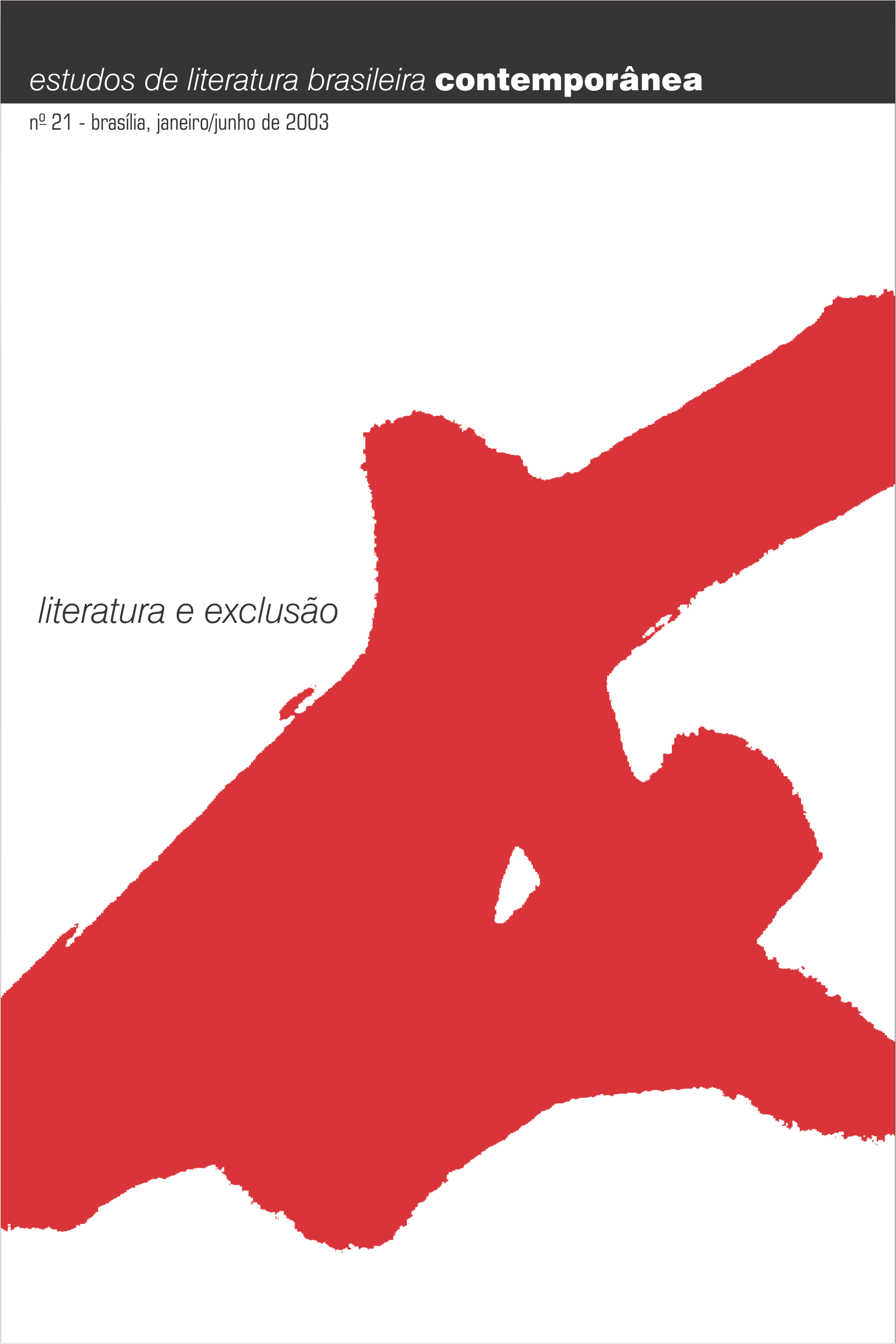Imagens da tortura:
ficção e autoritarismo em Renato Tapajós
Abstract
Imagens da tortura: ficção e autoritarismo em Renato Tapajós
Downloads
References
ADORNO, Theodor W. “Posição do narrador no romance contemporâneo”, em VÁRIOS. Textos escolhidos. São Paulo: Abril Cultural, 1983. 2 ed. (Os Pensadores)
______. “Crítica cultural e sociedade”, em Prismas. São Paulo: Ática, 1998.
______. “Educação após Auschwitz”, em Sociologia. São Paulo: Ática, 1986
______. “Lírica e sociedade”, em BENJAMIN, Walter et alii. Textos escolhidos. São Paulo: Abril Cultural, 1983. HOBSBAWM
______. Mínima moralia. São Paulo: Ática, 1992
______. Negative dialectics. New York: The Continuum Publishing Company, 1999.
______. Teoria Estética. Lisboa: Martins Fontes, 1988.
ALLODI, Federico. “Post-traumatic stress disorder in hostages and victims of torture”. Psychiatric clinics of North America. V.17. n.2. jun.1994.
ARNS, Paulo Evaristo et alii. Brasil nunca mais. Petrópolis: Vozes, 1996.
BADEN, Nancy. The muffled cries. The writer and literature in authoritarian Brazil, 1964-1985. Boston: University Press of America,1999.
BENJAMIN, Walter. “Sobre o conceito de história”, em Magia e técnica, arte e política. São Paulo: Brasiliense, 1985.
BERLINGUER, Giovanni. “Corpo humano: mercadoria ou valor?” Estudos avançados. São Paulo: IEA-USP, 1993. V.7. n.19.
DALCASTAGNÉ, Regina. O espaço da dor. O regime de 64 no romance brasileiro. Brasília: Ed. UNB, 1996.
DIAS, A. Gonçalves. Obras poéticas. São Paulo: Companhia Editora Nacional, 1944. 2 v.
FRANCO, Renato. Itinerário político do romance pós-64: A Festa. São Paulo: Ed. UNESP, 1998.
FRIEDRICH, Hugo. Estrutura da lírica moderna. São Paulo: Duas Cidades, 1978.
GASPARI, Elio. A ditadura escancarada. São Paulo: Companhia das Letras, 2002.
HEGEL, G.W.F. Estética. Lisboa: Guimarães, 1993.
HOBSBAWM, Eric. Era dos extremos. São Paulo: Companhia das Letras, 1995.
RIBEIRO, Renato Janine. “A dor e a injustiça”, em COSTA, Jurandir Freire. Razões públicas, emoções privadas. Rio de Janeiro: Rocco, 1999.
ROSA, Guimarães. Grande sertão: veredas. Rio de Janeiro: José Olympio, 1978.
SCHELLING, Friedrich. La relación de las artes figurativas con la naturaleza. Buenos Aires, Aguilar, 1959.
SCHOLLHAMMER, Karl Erik. “Os cenários urbanos da violência na literatura brasileira”, em PEREIRA, Carlos Alberto et alii. Linguagens da violência. Rio de Janeiro: Rocco, 2000.
SELIGMANN-SILVA, Márcio. “A história como trauma”, em SELIGMANN-SILVA, Márcio & NESTROVSKI, Arthur, org. Catástrofe e representação. São Paulo: Escuta, 2000.
______. “Do delicioso horror sublime ao abjeto e à escritura do corpo”, em ANDRADE, Ana Luiza; CAMARGO, Maria Lucia & ANTELO, Raul, orgs. Leituras do ciclo. Florianópolis: ABRALIC/Grifos, 1999.
______. “Zeugnis e testimonio: um caso de intraduzibilidade entre conceitos”. Letras. Santa Maria: UFSM, 2001. nº 22. Dossiê Literatura e Autoritarismo.
SILVERMAN, Malcolm. Protesto e o novo romance brasileiro. Porto Alegre: Ed. UFRGS/ Ed. UFSCAR, 1995.
TAPAJÓS, Renato. Em câmara lenta. São Paulo: Alfa Omega, 1977.
VIÑAR, Maren & VIÑAR, Marcelo. Exílio e tortura. São Paulo: Escuta, 1992.
Downloads
Published
How to Cite
Issue
Section
License
Authors who publish in this journal agree to the following terms:
a) The authors maintain the copyright and grant the journal the right of first publication, the work being simultaneously licensed under the Creative Commons Attribution License-Non Commercial 4.0 which allows the sharing of the work with acknowledgment of the authorship of the work and publication this journal.
b) Authors are authorized to enter into additional contracts separately, for non-exclusive distribution of the version of the work published in this journal (eg publish in institutional repository or as a book chapter), with authorship recognition and publication in this journal.
c) Authors are allowed and encouraged to publish and distribute their work online (eg in institutional repositories or on their personal page) after the editorial process, as this can generate productive changes, as well as increase the impact and citation of published work (See The Effect of Free Access).
d) The authors of the approved works authorize the magazine to, after publication, transfer its content for reproduction in content crawlers, virtual libraries and the like.
e) The authors assume that the texts submitted to the publication are of their original creation, being fully responsible for their content in the event of possible opposition by third parties.


